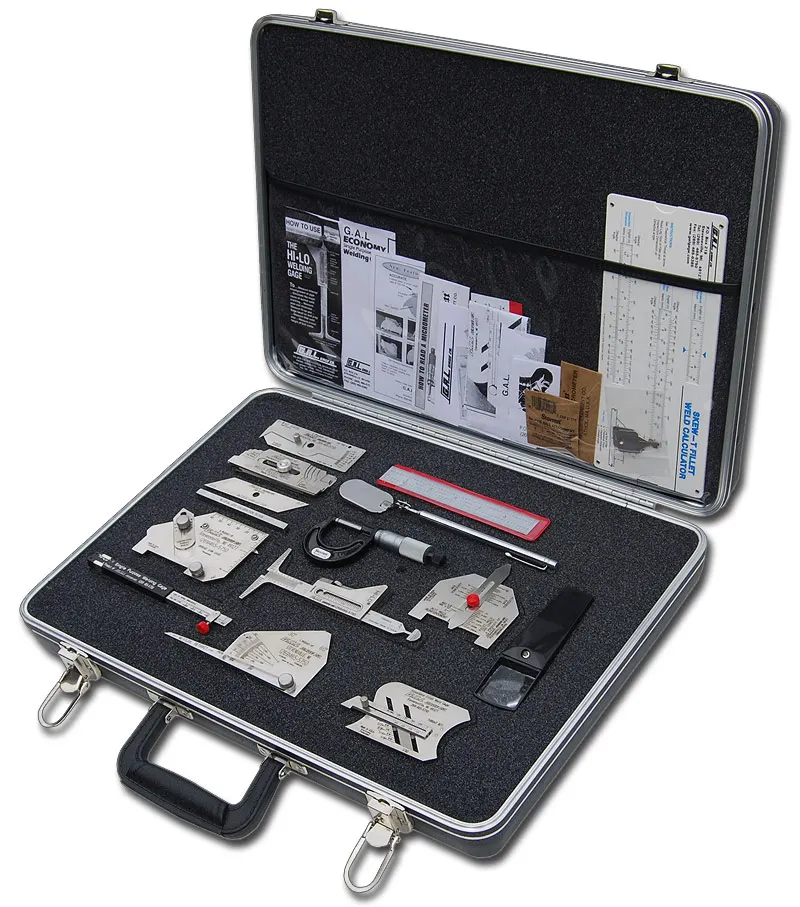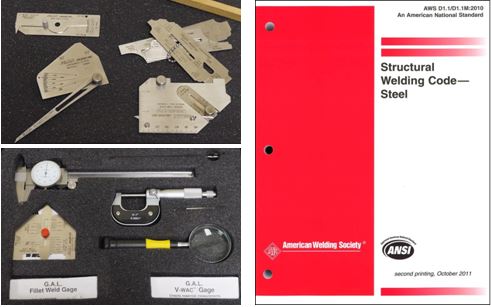Why Choose Specialist Welding Inspection Gilbert Arizona for Your Projects?
Wiki Article
A Comprehensive Guide to Welding Examination: Comprehending Criteria, Techniques, and Ideal Practices for Quality Assurance
Welding examination plays an essential duty in making sure the structural stability and safety of bonded components, demanding a detailed understanding of industry requirements such as those developed by AWS and ASME. As we explore these critical aspects, it becomes obvious that the effects of welding examination prolong far past conformity, inviting a better evaluation of just how these processes form industry requirements and techniques.Significance of Welding Examination
Welding inspection plays a vital duty in ensuring the integrity and safety of bonded frameworks. It is a crucial process that validates that welds adapt predefined specs, which is crucial in different industries, including building and construction, vehicle, and aerospace. By conducting comprehensive evaluations, prospective issues such as splits, insufficient combination, and porosity can be recognized early, protecting against devastating failings that could cause mishaps or costly repair work.The relevance of welding examination prolongs past plain compliance with laws; it also promotes count on with stakeholders. Customers and governing bodies anticipate assurance that the structures they count on are developed to hold up against operational anxieties. In addition, efficient welding examination techniques add to long-lasting durability and efficiency of the structures, eventually leading to minimized maintenance costs.
Additionally, welding evaluation promotes a culture of quality within companies, encouraging adherence to best practices and constant improvement. By incorporating assessment processes right into the welding process, companies can improve their track record and develop themselves as leaders in quality control. In verdict, the importance of welding inspection lies in its capacity to protect lives, make sure structural integrity, and maintain market criteria, making it a vital facet of welding operations.
Secret Sector Standards
Making certain compliance with key industry standards is crucial for preserving the high quality and safety and security of bonded structures. Various companies develop these requirements to advertise best methods in welding and evaluation - Welding Inspection Gilbert Arizona. Among the most recognized are the American Welding Society (AWS) and the American Society of Mechanical Designers (ASME), which provide in-depth standards and specifications for welding procedures and assessment standardsAWS requirements, such as AWS D1.1 for structural welding, synopsis demands for products, layout, and screening to ensure the stability of welds. ASME codes, consisting of ASME Section IX, regulate the credentials of welders and welding treatments, making sure regular top quality in industrial applications. Globally, the ISO 3834 common stresses top quality demands for fusion welding, giving a structure for companies to show conformity with global finest practices.
Compliance with these criteria not only improves the reliability of bonded frameworks yet additionally mitigates risks associated with architectural failings. In addition, adherence to sector requirements is commonly a prerequisite for regulatory approvals and can dramatically affect job specifications. Eventually, understanding and applying these crucial criteria are important for efficient welding assessment and quality control.
Examination Techniques Introduction
Effective welding assessment depends on a range of strategies created to evaluate the quality and integrity of welds. These techniques can be broadly categorized into non-destructive and damaging screening (NDT) approaches. Non-destructive screening strategies, which are commonly chosen in the market, permit the assessment of welds explanation without endangering the integrity of the material.

Amongst the most typically used NDT methods are visual inspection, ultrasonic screening, radiographic screening, and magnetic particle screening. Aesthetic examination is commonly the very first step in the evaluation process, allowing examiners to identify surface blemishes and evaluate weld bead accounts.
Each technique has its own benefits and constraints, making it crucial for assessors to pick one of the most proper method based upon the particular needs of the task, the materials entailed, and the criticality of the welds being examined. This cautious selection makes certain thorough analyses and maintains security and quality requirements in welding procedures.
Common Flaws and Their Ramifications
An extensive understanding of typical issues in welds is crucial for maintaining structural stability and safety in bonded buildings. Welding defects can significantly endanger the mechanical properties of the joint, bring about failures that could endanger both workers and devices.Usual problems consist of porosity, which materializes as little gas pockets caught in the weld metal, deteriorating the overall structure. Cracking is one more widespread problem, typically arising from quick air conditioning or incorrect joint layout, causing stress and anxiety focus that can result in devastating failures. Incomplete combination takes place when the weld metal falls short to correctly bond with the base material, producing weak factors that might bring about separation under lots.
Other significant flaws consist of undercutting, where the weld grain erodes the base steel, and slag additions, which can prevent the weld's toughness. Each of these issues has certain implications; as an example, porosity can minimize ductility, while cracking directly influences tensile stamina. Recognizing website link and comprehending these flaws throughout examination is vital for applying rehabilitative steps and making sure compliance with sector criteria, inevitably guarding the architectural honesty of bonded assemblies.
Finest Practices for High Quality Guarantee
Carrying out finest practices for quality control in welding processes is crucial for accomplishing optimal outcomes and decreasing problems. One important method is the facility of clear welding treatments that stick to sector requirements and specs. These procedures must include comprehensive guidelines relating to product option, joint prep work, and welding methods to make sure consistency and top quality.Normal training and qualification of welding employees are likewise important. Competent welders who understand the importance of quality control are more probable to produce audio welds. In addition, implementing a durable assessment program, consisting of both non-destructive and visual testing (NDT), can help determine issues early in the procedure, permitting prompt rehabilitative activities.

Finally, fostering a culture of top quality within the organization encourages employees to prioritize top quality in their work. By sticking to these best methods, organizations can enhance the stability of their welding procedures, eventually bring about boosted item top quality and reduced costs related to rework and repair work.

Conclusion
In final thought, welding evaluation plays a vital function in making sure the integrity and safety of welded structures. By carrying out best practices, organizations can boost integrity, minimize upkeep expenses, and grow depend on among clients, eventually contributing to effective welding procedures.Additionally, welding evaluation promotes a society of high quality within organizations, motivating adherence to finest practices and continuous improvement. In final thought, the significance of welding assessment lies in its ability to dig this guard lives, make certain architectural integrity, and promote industry standards, making it an indispensable element of welding procedures.
Amongst the most recognized are the American Welding Society (AWS) and the American Culture of Mechanical Designers (ASME), which provide comprehensive guidelines and specifications for welding processes and examination standards.
Eventually, understanding and executing these crucial standards are important for reliable welding evaluation and high quality guarantee.
Reliable welding examination counts on a selection of methods created to evaluate the quality and honesty of welds.
Report this wiki page